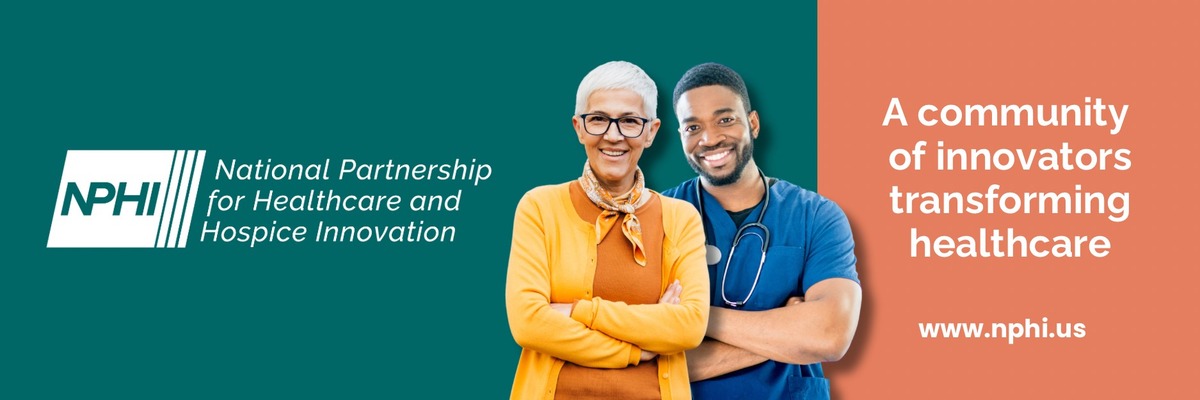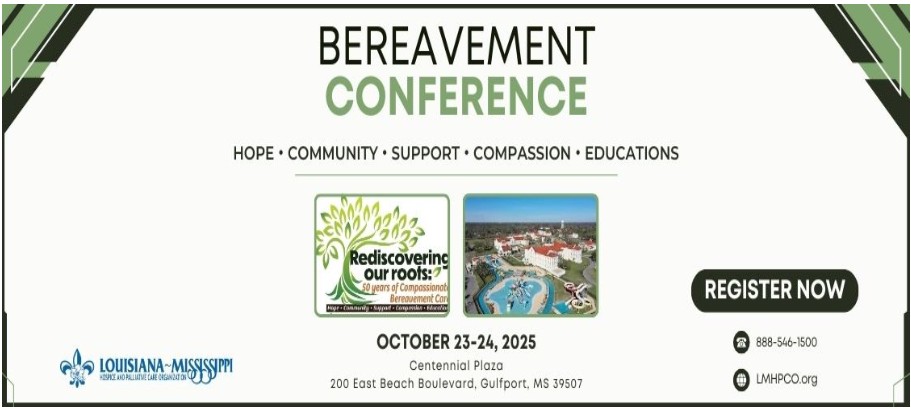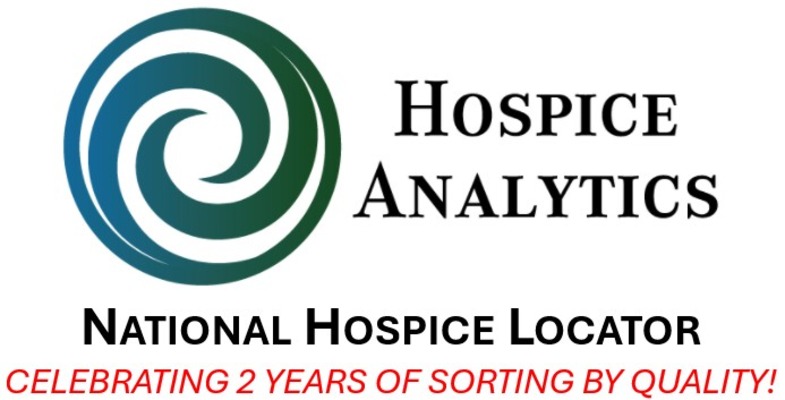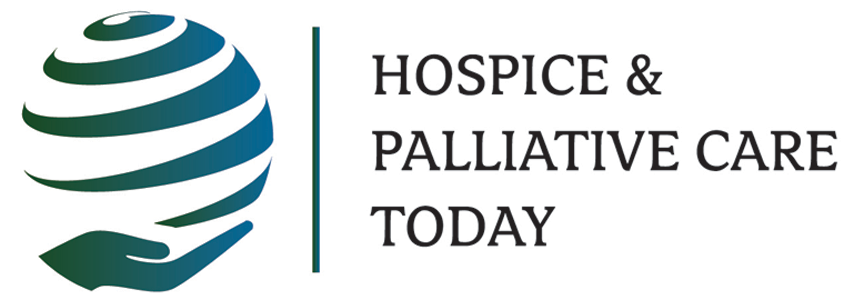Sign up for our free daily newsletters here! Note: subscribers can access our search feature!
Welcome to Hospice & Palliative Care Today, a daily email summarizing numerous topics essential for understanding the current landscape of serious illness and end-of-life care. Teleios Collaborative Network podcasts review Hospice & Palliative Care Today monthly content - click here for these and all TCN Talks podcasts.
3. Agrace opens western Wisconsin office in La Crosse
4. Silver tsunami brings new challenges for end-of-life care
Understanding the influence of culture on end-of-life, palliative, and hospice care: A narrative review
Cureus; by Veena Hira, Sainamitha R. Palnati, and Saajan Bhakta; 7/15/25
... This narrative review included 25 relevant publications related to influence of culture and patient demographics on end-of-life care, hospice, and palliative care. As each culture has its own unique views on death and dying, it is crucial to note these cultural differences when assisting with end-of-life care to best align with patients’ beliefs and values. Themes such as cultural barriers, communication preferences and family roles emerged from the publications. ... This narrative review offered a snapshot of how culture influences end-of-life decisions worldwide, specifically in East Asia, South Asia, the Middle East, Europe, and North America, while highlighting themes of 1) truth disclosure and communication preferences, 2) patient autonomy and family involvement, and 3) perception of illness and death. ... Central to providing effective end-of-life care is open, culturally tailored communication that respects patients’ and families’ values, facilitated through shared decision-making discussions. ... Ultimately, integrating cultural understandings of death and dying into end-of-life care planning is not simply a matter of sensitivity, but it is a matter of quality and equity. Health systems must not only provide choices but ensure those choices are intelligible, meaningful, and respectful within the patient’s worldview.
Editor's Note: Pair this today's post, My health and my politics walk into a doctor’s office …
Leading after your predecessor fails
Harvard Business Review; by Jordan Stark and Darcy Eikenberg; 7/16/25
... Being promoted to lead after your predecessor fails is often anything but a victory lap. In fact, a 10-year longitudinal research project on executive transitions by consulting firm Navalent found that more than 50% of executives who “inherit a mess” fail within their first 18 months on the job. ... Succeeding after your predecessor fails demands an entirely different leadership approach.
- Prepare to be surprised. ...
- Accelerate reflection. ...
- What’s broken in the system that my predecessor could not fix?
- [Go to the source article for more great questions to ask.]
- Don’t delegate—dig in. ...
- Be honest in communicating what needs fixing and where you’re going. ...
- Don’t blame your predecessor. ...
- Use the power of “and.” ...
- Don’t be afraid to repeat yourself. ...
- Make sure your team is having the right conversations. ...
- Be patient with yourself. ...
 |
Agrace opens western Wisconsin office in La Crosse
WisBusiness, La Crosse, WI; Press Release; 7/16/25
Agrace continues its rapid growth across the state of Wisconsin with the opening of a new office in La Crosse, a western-Wisconsin city of 52,000 located along the Mississippi River. Since its founding in Madison, Wis., in 1978, Agrace has provided exceptional care for the state’s residents who are in the final months of life. The new Agrace location gives residents of La Crosse County greater choice for high-quality, in-home hospice care. County residents can enroll with Wisconsin’s largest nonprofit hospice to receive hospice care that comes to them where they live—in private homes, long-term care facilities or any other place they call home.
Silver tsunami brings new challenges for end-of-life care
NPR Network, KANW New Mexico Public Radio; by Jenny Kinsey; 7/16/25
... Inhora isn’t a hospice but it describes itself as a social model hospice house that provides a place to be. The nonprofit opened in April and contracts with several local hospice providers to provide end of life support. ... Inhora gets its support through donations and volunteer help which enables their guests to stay for free. That’s the idea behind Inhora, said Miles Gloetzner, RN, Inhora’s founder and Executive Director. ... Investigating the idea led him to the Omega Home Network, a national network of comfort care homes, and other communities with the same mission bringing comfort and caring to those at the end of life . That’s when he realized his dream was not his alone. A comfort care home or social model hospice house provides free room and board for patient/guests and a family member or friend while they receive hospice care. ... Comfort homes like Inhora are found across Mountain West states, including Colorado, Nevada, Utah, Idaho, and Wyoming. The idea isn’t new. For instance, the Omega Home Network was founded in 2003 in Tulsa, Oklahoma. It is a national organization of 50 comfort care homes – and growing rapidly with 79 in development.
 |
Charlie’s Angels Quilting Group donates 2,000th quilt to hospice
MIdland Daily News, Midland, MI; by Jhyrah DeLapp; 7/17/25
Charlie’s Angels Quilting Group has donated its 2,000th handmade quilt to United Hospice Service of Aspire Rural Health System. Since 2007, every quilt made by the group has been uniquely designed, featuring a wide variety of colors, patterns and textures. Each quilt bears a thoughtful label that reads: “May this blanket bring you peace and comfort.” ... The group is made up of dedicated men and women from Huron, Sanilac and Tuscola counties. It was founded 18 years ago by Brenda Miller of Bad Axe in memory of her brother, Charlie Kiehl, who received care at the Hospice Residence in Marlette. After Charlie’s passing in 2007, Brenda and her family were deeply touched to receive a handmade quilt from the hospice team. Inspired by that act of kindness, she began gathering friends and family to create quilts for future patients, launching what would become Charlie’s Angels Quilting Group.
Opinion: My health and my politics walk into a doctor’s office …
The Washington Post; by Kim Fellner; 7/16/25 [Note: Access is behind a paid firewall, with an option to set up a temporary free account]
... My palliative care doctor and I have almost nothing in common. We’re still learning from each other. ... It began simply enough. By October, my sarcoma had moved from possibly curable to definitively terminal, and, since metastasis to the bones can be painful, my anchor oncologist offered to connect me with a palliative care doctor to help with the physical and conceptual aches and pains of dying. Which seemed like a good thing to do. ... I did not anticipate, however, that the personal and the political would collide in my doctor’s office. ... [Descriptions unfold of significant, conflicted dialogue between (1) this Jewish daughter of holocaust survivors whose life-long vocation was social justice and (2) this Christian palliative care physician who asked about mental health and then dismissed this person's primary concerns that were affecting her dying.] ... Clearly, my doctor and I shared some beliefs about the importance of the palliative approach. ... But as the doctor noted, the best palliative care goes beyond the purely physical to address the more cosmic questions of life and death, and I was uncertain we were well matched as partners for this intimate process. ... I had no idea how to proceed. ... [More descriptions.] ... And that’s where the magic happened. Within a few days, my palliative care doctor sent me back a transparent, thoughtful and moving response. ... Her courage and openness, her willingness to risk a forthright response, have precipitated a remarkable dialogue about what each of us brings into the room, and how we can honor the space and each other once we get there. ...
Editor's Note: Whatever one’s political or religious stance, this article is sure to spark fireworks—of conflict, dissonance, and, hopefully, profound insight. I encourage readers to approach it with attentiveness and compassion, staying attuned to three key dimensions:
- The experiences and perspectives of both individuals, grounded in hospice ethics and principles of holistic, person-centered care;
- Any judgment or defensiveness that arises within you (don't dismiss, do listen and dig deeper within);
- Your own choices in navigating similar dynamics in your professional or personal roles.
These core components of Emotional Intelligence can lead to transformational solutions and growth.
Pair this with today's post, Understanding the influence of culture on end-of-life, palliative, and hospice care: A narrative review.
 |
Medicare telehealth trends: Information on telehealth use by Medicare Fee-for-Service beneficiaries
Data.CMS.gov; Centers for Medicaree & Medicaid Services; 7/16/25
Data update frequency: Quarterly
Latest data available: Q4 2025
The Medicare Telehealth Trends dataset provides information about people with Medicare who used telehealth services between January 1, 2020 and December 31, 2024. The data were used to generate the Medicare Telehealth Trends Report.
Major health groups push Congress to keep protecting state medical marijuana laws from federal interference
Marijuana Moment; by Kyle Jaeger; 7/16/25
A coalition of 45 marijuana advocacy and medical groups—including Americans for Safe Access (ASA), U.S. Pain Foundation, National Multiple Sclerosis Society, Epilepsy Foundation of America and more—are calling on congressional lawmakers to ensure that state medical cannabis programs remain protected under spending legislation that’s advancing. ... The rider that protects state medical cannabis laws from federal interference, meanwhile, has been part of federal law since 2014 but requires renewal on an annual basis as part of appropriations legislation.
 |
Homewatch CareGivers president on moving into clinical care, building partnerships of the future
Home Health Care News; by Joyce Famakinwal 7/16/25
... Denver-based Homewatch CareGivers operates in over 30 states and has 234 locations. The personal care franchise employs over 4,500 caregivers. The company’s goal to continue “filling the white space” has resulted in 20 new franchisees since 2023. Plus, Homewatch CareGivers is expanding into the clinical care space with the launch of a nursing services vertical, and through its partnerships with health systems and hospitals. Home Health Care News recently caught up with Homewatch CareGivers President Todd Houghton. During the conversation, he explained why hospitals benefit from home care partnerships, how Homewatch CareGivers is building out its clinical capabilities and how the company is utilizing AI tools.
AI in action: Exploring how AI is helping hospices do things in new ways
Husch Blackwell; podcast by Meg S.L. Pekarske with Dina Yankelewitz; 7/16/25
Husch Blackwell’s Meg Pekarske is joined by Dina Yankelewitz, CEO of Vitalis Care, a technology company that is harnessing AI technology to reduce staff burden and allow more time for patient care. Dina shares her vision and passion for the hospice space, discussing how she applied her background in education and learning methods to inform not only what tools to develop but importantly how they work for the end user. Dina and Meg explore what AI is good at as well as its limits and why scheduling optimization, compliance, and reimbursement were the first areas Vitalis tackled.
 |
Executive Personnel Changes - 7/16/25
- Big Bend Hospice (BBH) and Seven Oaks Health (SOH) are pleased to announce that Heather Reynolds, CPA, MBA, has joined the Executive Leadership Team as Chief Financial Officer.
 |
The Fine Print:
Paywalls: Some links may take readers to articles that either require registration or are behind a paywall. Disclaimer: Hospice & Palliative Care Today provides brief summaries of news stories of interest to hospice, palliative, and end-of-life care professionals (typically taken directly from the source article). Hospice & Palliative Care Today is not responsible or liable for the validity or reliability of information in these articles and directs the reader to authors of the source articles for questions or comments. Additionally, Dr. Cordt Kassner, Publisher, and Dr. Joy Berger, Editor in Chief, welcome your feedback regarding content of Hospice & Palliative Care Today. Unsubscribe: Hospice & Palliative Care Today is a free subscription email. If you believe you have received this email in error, or if you no longer wish to receive Hospice & Palliative Care Today, please unsubscribe here or reply to this email with the message “Unsubscribe”. Thank you.


